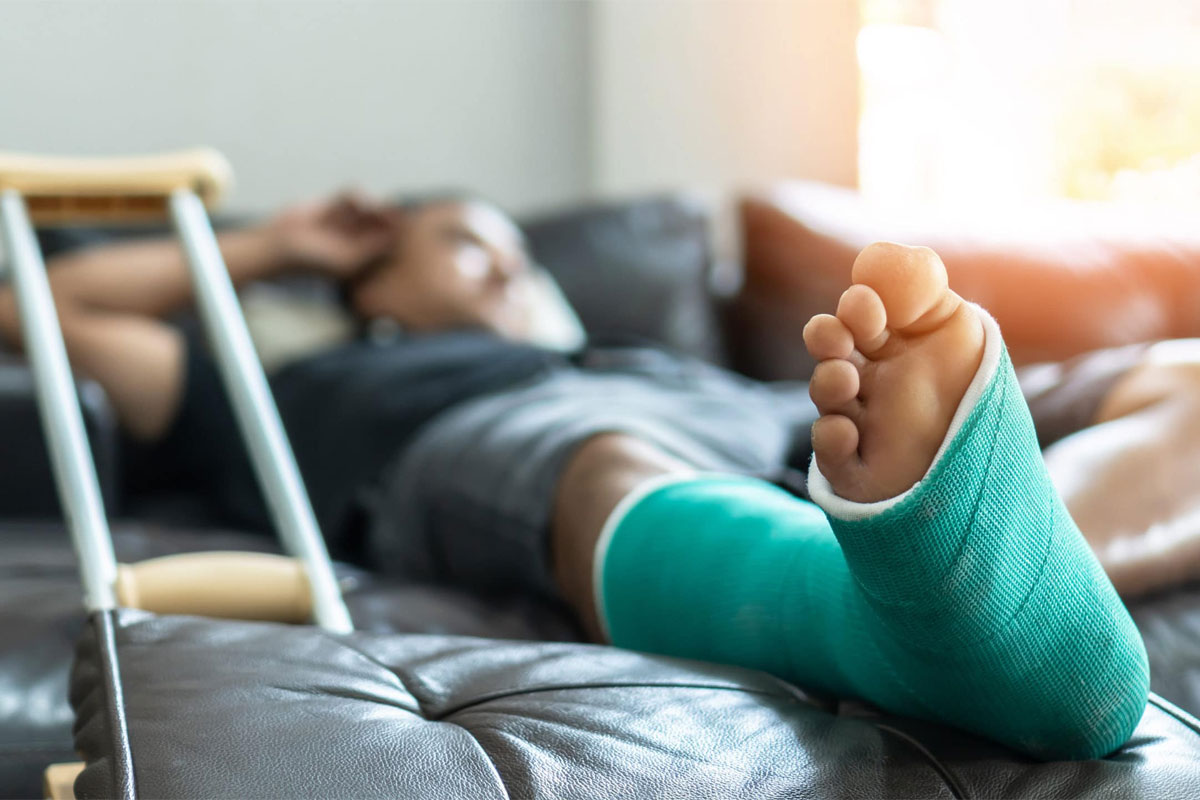Falling down a flight of stairs can lead to serious injuries. When this type of accident occurs in a rented apartment, questions of liability arise. However, it can be hard to determine whether the landlord is legally responsible for tenant injuries in these circumstances. Below, we’ll examine key landlord liability issues surrounding tenants falling down apartment stairs:
Landlord’s Responsibility to Provide Safe Premises
Landlords have a legal duty to keep rental properties in a fit and habitable condition. Stairways in apartment buildings are considered part of the premises. They must be appropriately constructed and maintained to prevent potential hazards and accidents from occurring.
In most cases, landlords are responsible for the original design, construction, and installation of stairs and railings in rental properties. All of these things must adhere to local building codes and safety standards. On top of this, landlords must perform regular maintenance in these areas. The stairs must be kept in good condition and free from defects that pose unreasonable risks to tenants. Landlords who neglect these duties by allowing hazardous conditions such as missing or broken handrails can be rendered liable if a fall occurs.
Liability for Known Dangers Not Corrected
Most states in the US require landlords to repair dangerous conditions they know or should know about. If a tenant has notified the landlord about a problem with the stairs, such as absent handrails or loose steps, the landlord has a duty to fix it within a reasonable time frame.
Failure to fix faults means the landlord is considered negligent, and the tenant can file a premises liability lawsuit if the uncorrected fault causes a fall down the stairs.
Of course, landlords are not expected to immediately rectify temporary minor problems like a loose carpet or sticky stairs on a rainy day. However, significant hazards must be addressed so tenants can use the stairs safely.
Impact of Building Codes and Ordinances
Local building codes and housing ordinances contain legal requirements for staircase design, materials, dimensions, load capacity, and features like handrails. Landlords must ensure apartment stairs comply with all relevant laws and regulations. Violations of these codes are deemed negligible by the courts. This means the codes set the legal standard of care – the landlord should have known what’s required. Injured tenants can use code violations to help prove the landlord failed in their duty of care.
Burden of Proof on Tenant
The burden of proof falls on the tenant to establish the landlord’s Responsibility. The tenant must show through evidence that:
- The landlord owed a duty of care to keep the premises reasonably safe.
- The landlord breached this duty through negligent action or inaction regarding the stairs.
- This negligence directly caused the tenant’s injuries from falling.
- The fall resulted in quantifiable damages.
For instance, the tenant may present proof of past complaints or citations about the stairs, witness statements and accounts of longstanding disrepair, and expert assessments confirming the stairs were hazardous. Photographic evidence also helps document the conditions.
However, it is crucial to be aware that tenants are expected to exercise reasonable care for their own safety. Tenants who act foolishly while using the staircase, whether in poor condition or not, may struggle to win a premises liability lawsuit.
What Tenants Should Do if They Fall Down Their Apartment Stairs
Taking a tumble down the stairs can lead to bumps, bruises, breaks, or worse. If you find yourself injured after falling down your apartment stairs, try to remain calm and follow these steps:
- Assess your condition – the first thing you need to do is assess your condition and get medical help if needed.
- Report the incident to your landlord in writing – send them a certified letter or email describing what happened and what injuries you sustained.
- Collect evidence – collect as much evidence as possible. Write down things like what the lighting was like, what caused the fall, and what you were doing beforehand. You also need to keep copies of any medical documents. You will need this evidence if you choose to pursue legal action later.
- Take steps to prevent further accidents – ask the landlord to repair any hazards.
- Speak to a personal injury attorney – if the landlord was to blame for the fall, contact a lawyer for advice.
By understanding key liability issues, tenants can determine if the landlord may be responsible for injuries sustained from falling down unsafe apartment steps. While liability claims should generally be avoided, they are sometimes necessary to hold neglectful landlords accountable for their actions and recover damages from preventable accidents.
If you’ve fallen down your apartment steps and want to hold your landlord responsible, contact our lawyers at Marc Albert Law Firm. You can find us at the following addresses:
- Astoria – 32-72 Steinway St, Astoria, NY 11103
- Brooklyn – 7113 5th Avenue, Brooklyn, NY 11209
- Syosset – 175 Jericho Turnpike, Syosset, NY 11791
Or alternatively, call now for a free consultation on (347) 472-5080.

